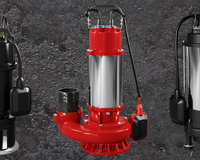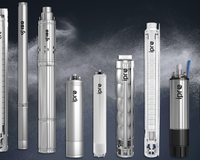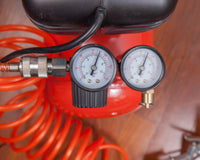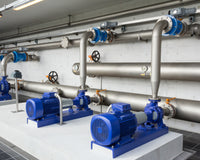Hydrophore is the colloquial name of the water and air installation, whose task is to maintain constant water pressure. An integral element of the hydrophore set is a pressure tank, filled with liquid and air and a rotor pump. The hydrophore tank is connected to the water supply system and equipped with a pressure gauge. The hydrophores are used primarily in single -family houses and on allotment gardens, but this is not the only use. They are also successfully used in industrial plants and service outlets.
When do you need to install a hydrophore?
Most private properties have Connection to the water and sewage network. However, there are situations when there is no such connection and the owner of the property must supply himself with water, for example, using the intake of underground water, i.e. a deep well. In such cases, the proper functioning of the home water installation is directly conditioned by assembly hydrophore set. It is not only responsible for maintaining the optimal water pressure, but also protects the pump against excessive operation, i.e. too frequent switching on and off. Traditional non -synovium hydrophores are characterized by significant dimensions, but more compact membrane hydrophores are mobile and work quieter, and their capacity is usually from 50 to 100 liters. Another solution is a set of two tanks (one for water, the other on the air), which work with a compressor.
The hydrophore is also installed in single -family houses with access to the water supply network, if the tap pressure is too low. The hydrophore set can also be used to collect water for watering garden plants - it can suck not only from the well, but also from the rainwater tank. It is also perfect when you need to buy water with a summer house. The hydrophore accumulates pressure and stores a supply of water, which meets the needs of users during breaks in the pump operation.
How does the hydrophore installation work?
The principle of the hydrophore operation is not complicated and uses the pressure difference. The hydrophores work with self -based pumps or with deep pumps. The cylindrical hydrophore tank is partly filled with water, above which the compressed air is located. Supplying water from the tank to the water supply network causes the air to expand and a decrease in its pressure. The pressure difference is controlled by the prescription and measured using a pressure gauge. When the air pressure reaches the minimum value, the pump turns on. The electric motor drives the flap rotor in the pump, the movement of which increases the moment of liquid rush. In this way, a pressure difference is produced between the suction side and the crowded pump, thanks to which it is possible to put water from the well into the hydrophore reservoir. The air begins to compress, and its pressure increases with the increase in the amount of sucks in water. The check valve protects the water back to the well.
After reaching the maximum air pressure, the prescription turns off the pump and the water can be distributed to the water supply network. Simply put, the increasing air pressure presses on the water and "pushes" it into the water network when the tap is unscrewed. The water loss is tantamount to expanding the air, the pressure of which decreases - and the cycle can start again.







